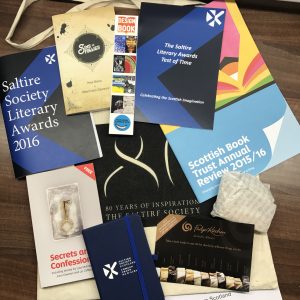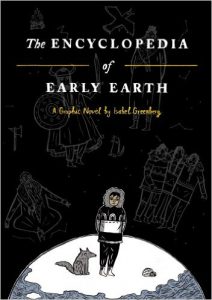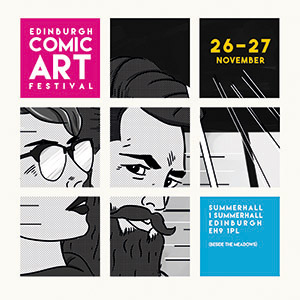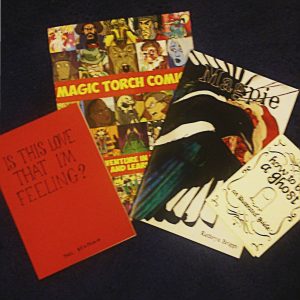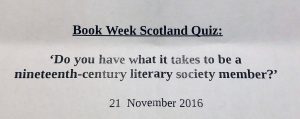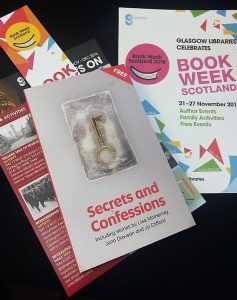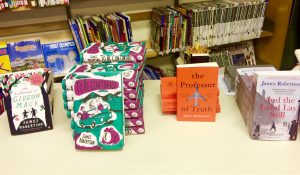As one of the event of Book Week Scotland, this year’s Saltire Society Literary Awards was held on 24th of November in Edinburgh. As a publishing student, I went there to participate in this activity and that was the first time I had ever attended such an event. Fortunately, I met some classmates and it made me feel much better.
To be honest, all the information I know about this award before the event comes from Wikipedia and Facebook. Saltire Society is an organization which aims to promote the understanding of the culture and heritage of Scotland. This organization has a long history, and it has established numerous awards, involving a number of cultural fields. The literary prize is one of them.
Before the award, we got half an hour to drink something and chat with others. At that time, everybody can share their experience with others. It is amazing that we did not know each other before but the topic was very natural to start. A bag was prepared for each guest in the seating area, including some brochures which introduce the awards of this year, the annual review of Scottish Book Trust and this year’s new book etc. This year’s awards include a total of more than ten items, the specific awards can be found from the following timetable, because I do not want this blog be simply reporting.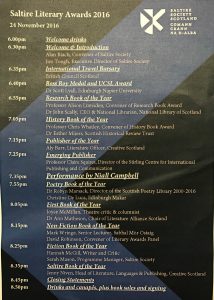
Next I want to talk about a few things that impressed me. The first one is about the “Publisher of the year”. The shortlisted publishers are Birlinn, Black and White Publishing, Floris Book, National Galleries of Scotland and Saraband. I remember the last month we just finished a presentation about Saraband. At that time, we searched and found almost nothing about this publisher on the internet, except their homepage. I even thought it was a tiny and financially struggling publisher in Scotland although they have published His Bloody Project which has been popular over the last year. But through this award I changed my mind, Saraband makes its own contribution to the publishing industry even though it is not a big publisher. Its efforts are equally worthy of respect, and its persistence is more worthy of recognition. It is also because of these publishers who know hard but still insist on it, the literary industry can constantly develop.
The second one is about our professor Claire, I did not know that she was present as an honored guest until her name appeared in the timetable. This made me feel that as a publishing student, I am really involved in the field of publishing, and this kind of opportunity which provided to students are rarely happens in my country.
Finally, I would like to talk about the importance of this kind of awards shortly. As publishers, it can be said our work is less pretentious but very essential. Readers are always attracted to the design and the content of the book, but they do not know all the efforts made by publishers. The publishing industry is not as fashionable as the film industry, and our awards are not as high-profile as the Oscars, but we also need such awards to recognize our efforts during the last year. Whether it is a publisher which has long history or just a novice, we all need to have such an opportunity to know each other, to see what’s happening in our industry. These good ideas can provide new ways of thinking for more publishers and this trend is also a kind of virtuous circle for publishing industry.
You can get more details of 2016 Saltire Society Literary Awards from here: http://www.saltiresociety.org.uk/awards/literature/literary-awards/
By the way, the performance by Niall Campbell during the activity was really nice, fond and full of emotion. You guys can search the video if you are interested in it.
